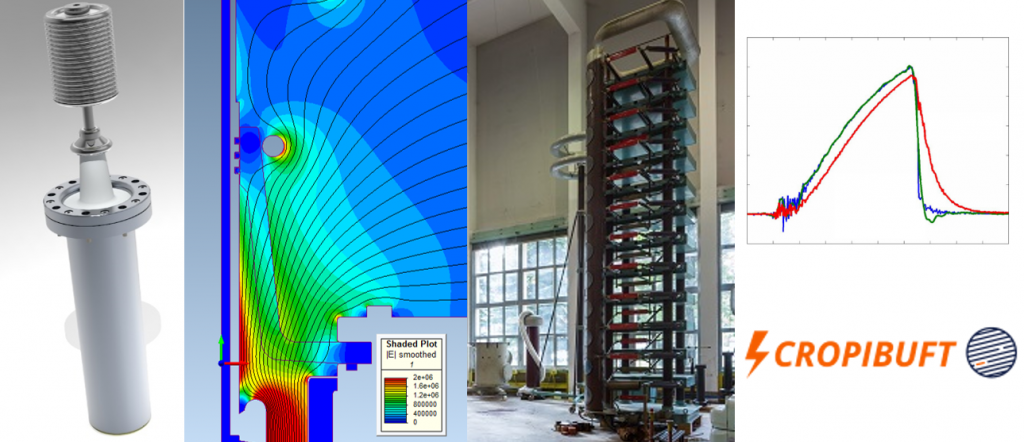Project start: November 2018.
Consortium:
KONČAR – Electrical Engineering Institute Inc.
KONČAR – Instrument Transformers Inc.

Abstract
Capacitively graded oil-paper insulation is the basis of electrical insulation for many electrical devices, such as bushings and instrument transformers. Despite their relatively low cost in the overall electrical energy distribution system, failures of such devices lead to distribution interruptions and can cause great economic losses. As such, they represent safety and economic risks that are today being alleviated by proper design, monitoring systems, and preventive replacement.
The power utility system is nowadays more frequently exposed to overvoltage transients due to the increase in renewable sources. Since they are dislocated and naturally inconsistent in operation, they attribute to the increase of switching operations. Moreover, since the gas-insulated switchyards are becoming more widely used, the number of very fast transients is also on the rise. Because of better safety and ecological aspects, accustomed mineral oil is lately being replaced with natural or synthetic esters, whose electrical effects are still not adequately known. All things considered, electrical devices throughout the system are being more frequently and severely stressed. The influence of the mentioned effects on their insulation properties should be investigated thoroughly.
In this project, the model housing for very fast overvoltage transient testing will be developed together with the experimental setup capable of producing and measuring all overvoltage transient signals. Investigating the influential and control parameters, the test plan for the measurement procedure will be given. Different materials for the capacitive sheets and oil types will be taken into account.
The expected contribution of the project is the increase of knowledge of the capacitively graded oil-paper insulation behavior under overvoltage transients. This can lead to better device optimization and monitoring techniques which will enhance the safety of electrical devices and reduce their environmental footprint.